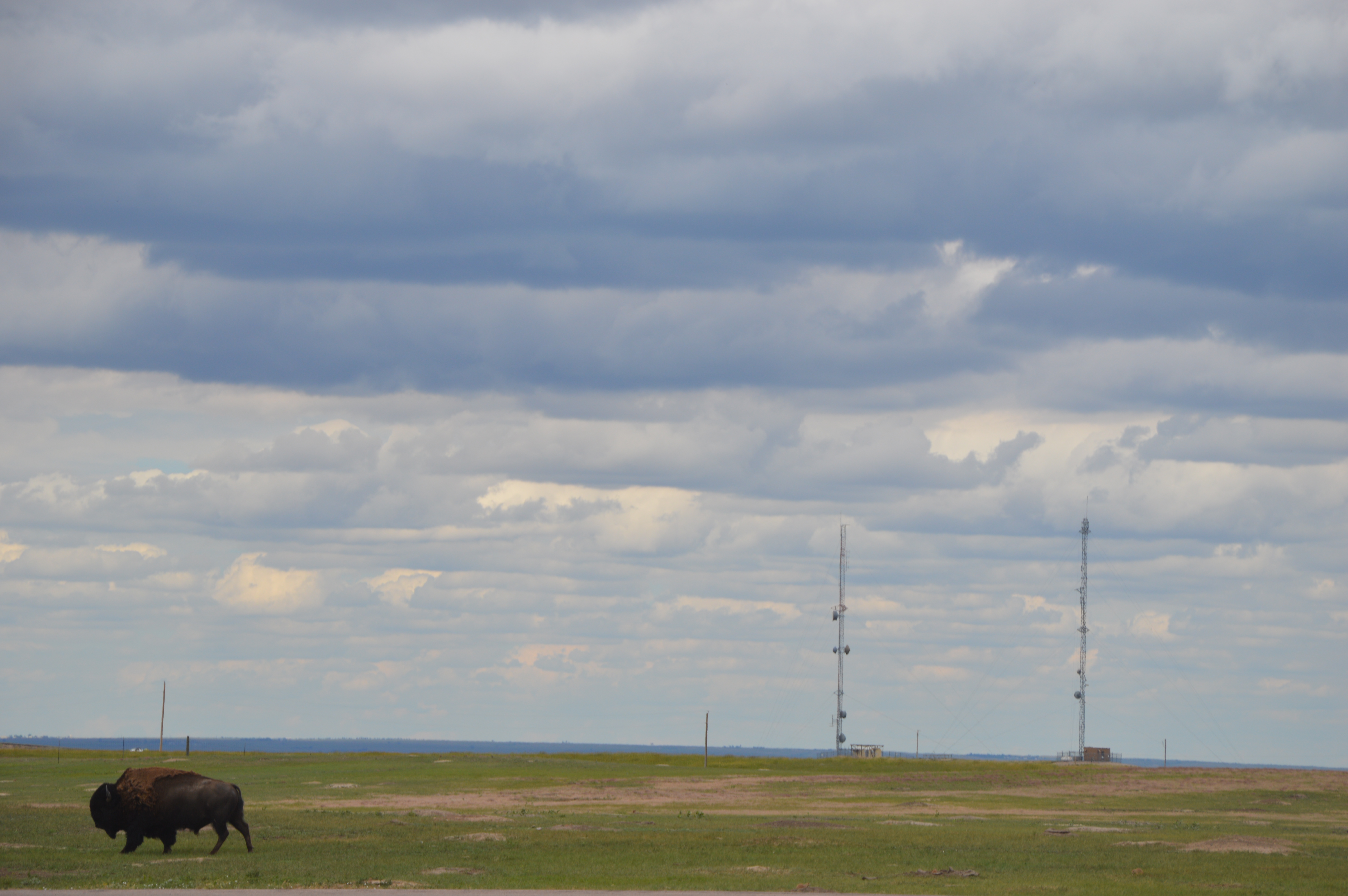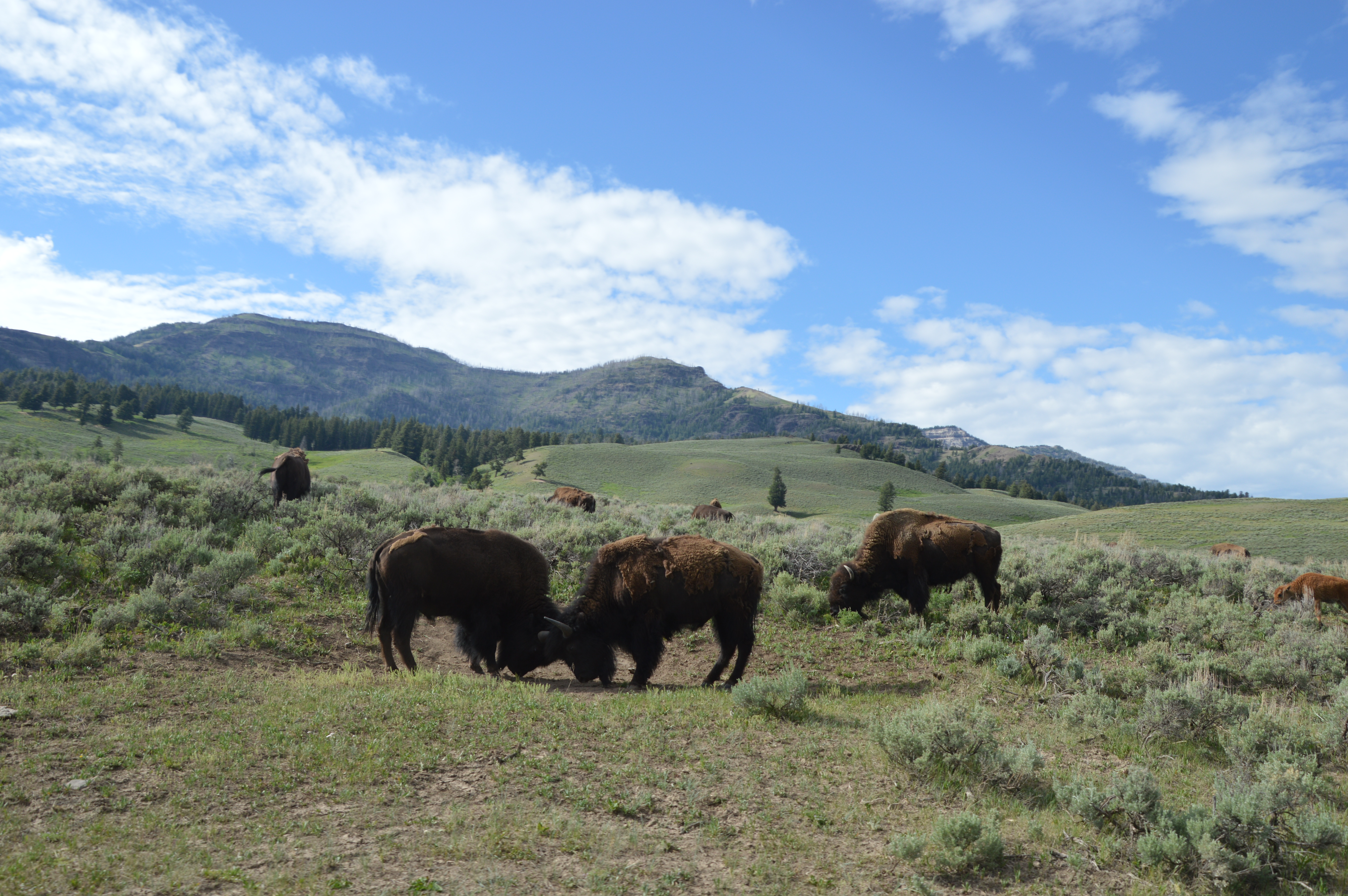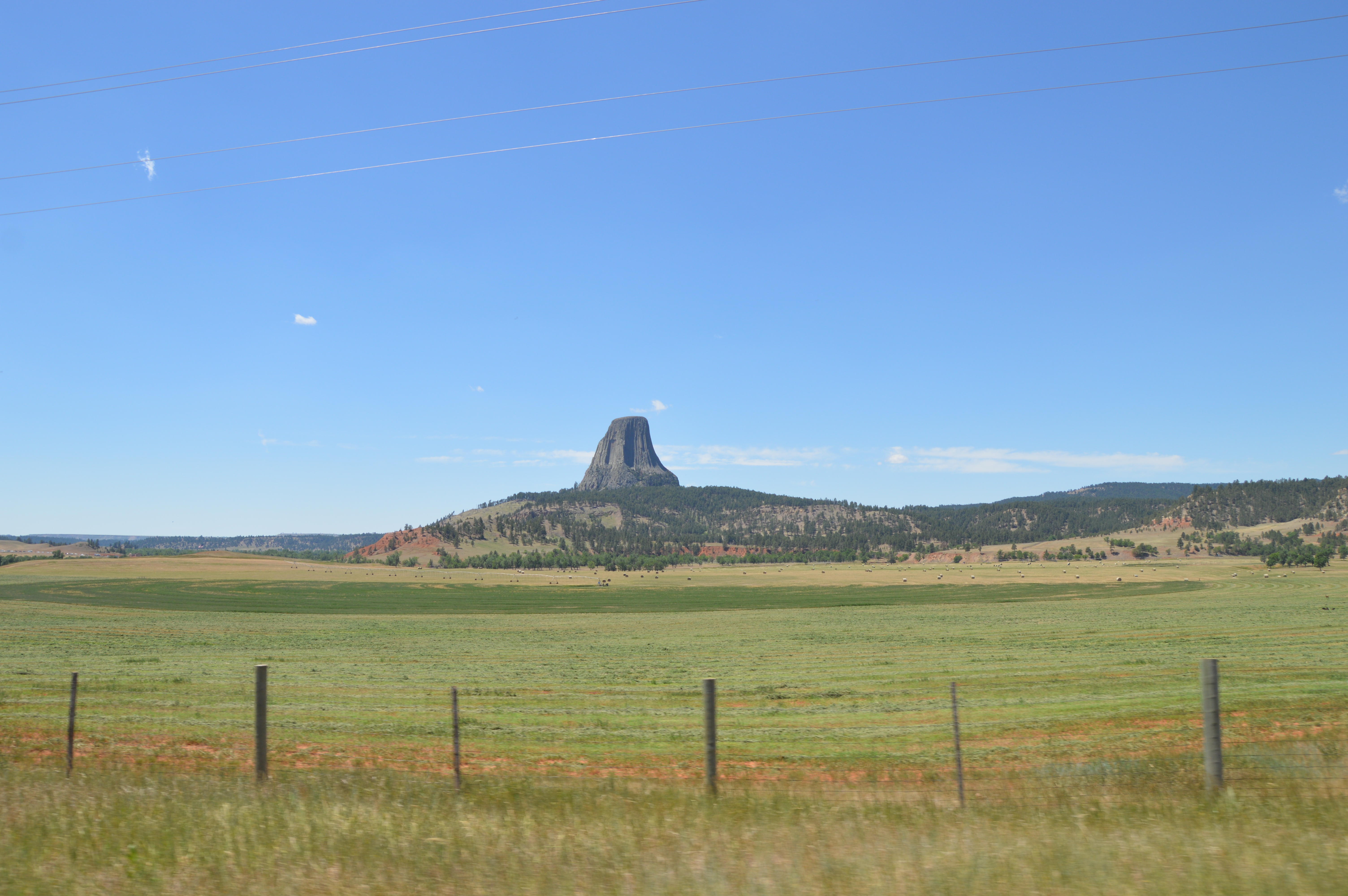How the Great Depression Fueled a Grassroots Movement to Create a New State Called Absaroka
In the 1930s, disillusioned farmers and ranchers fought to carve a 49th state out of northern Wyoming, southeastern Montana and western South Dakota
:focal(700x527:701x528)/https://tf-cmsv2-smithsonianmag-media.s3.amazonaws.com/filer_public/00/cb/00cb3a96-3367-4342-bffd-c55c790b8ac8/absaroka-illo.jpg)
It was early 1935, and things were miserable in the United States. The soil was dry, the banks had crashed, and jobs were few and far between. Things were miserable in the proposed state of Absaroka, too. In fact, that’s how Absaroka (pronounced ab-SOR-ka) got its start in the first place.
Talk of carving out a 49th state (Alaska and Hawaii had yet to join the Union) from northern Wyoming, southeastern Montana and western South Dakota first made the front page on March 2, 1935, the same day that neighboring headlines in the Montana-based Daily Inter Lake announced a litany of bad news: “Relief Bill Deadlock Is Unbroken,” “Struggling Factions in Wage Tilt Await ‘Real’ Concessions’” and “Insurgent Forces Are on the Run in Greece.”
The world was going wrong, it seemed. Although politicians in the would-be secessionist states had begrudgingly accepted the New Deal funds that promised material improvements, this money barely made it to the sparsely populated, isolated corners of the three states.

Discontent flared in Sheridan, Wyoming, a city roughly halfway between Yellowstone National Park and Mount Rushmore, and nearly 300 miles from Cheyenne, the state capital.
“A person living in Sheridan or any other northeastern Wyoming town must enter other states to reach his own state capital by train,” a local told the Daily Inter Lake. “For many years, this portion of the state was regarded as an orphan or stepchild.”
Feeling helpless and ignored by their state government, frustrated farmers, ranchers and other Sheridan residents coalesced around the idea of secession: leaving Wyoming and allying with nearby communities to start their own state.
The state would be called Absaroka, and Sheridan would be its capital. Supporters of the grassroots movement went about roping other disaffected citizens into their project, attracting varying levels of support in the years leading up to World War II.
/https://tf-cmsv2-smithsonianmag-media.s3.amazonaws.com/filer_public/53/09/5309c477-0999-485c-b280-73034e382fd6/group_1.png)
In the end, however, Absaroka failed. Early commentators predicted correctly that the effort would “never get beyond the realm of conversation.”
But the view shared in 2022 by Wyoming newspaper columnist Brian Beauvais, that Absaroka might be remembered (when it’s remembered at all) as “just an outlet for jaded cowboys to blow off steam and perform cheap political theater during tough economic times,” ignores the depth of the hard times and the people who found escape and purpose, albeit misplaced, in the promises of the movement.
“[They] weren’t fooling around,” Alan Simpson, a former Wyoming senator whose relatives were involved in the Absaroka campaign, told the New York Times in 2008. “A lot of people thought it was silliness, but to them, it wasn’t.”
Absaroka and the politics of resentment
The secession plan, drafted by local citizens in town meetings and reprinted in syndicated newspapers nationwide, stated that Absaroka would be composed of approximately 27 counties across Wyoming, Montana and South Dakota. These were the ancestral homelands of the Crow people—also known by the autonym Absaroka, or “children of the long-beaked bird”—until they were forced onto reservations after the Plains Wars of the 1870s. (Effectively no thought, voice or notice was given to Indigenous people in the debates over Absaroka, which would have encompassed the Crow and Northern Cheyenne reservations in southern Montana.)
Under the Absaroka proposal, Wyoming would be practically split in half. The northern portion of the state—including Yellowstone, Devils Tower, the Bighorn Mountains, and the deep canyons and wide plains in between—had been cut off since 1869, when the transcontinental railroad clustered power, influence and money in the southern cities of Cheyenne, Laramie and Green River. As the state struggled through the Great Depression, towns with state institutions like prisons, universities and mental hospitals seemed to fare much better.
/https://tf-cmsv2-smithsonianmag-media.s3.amazonaws.com/filer_public/17/de/17ded61e-d7a1-489b-88eb-84e15ef56861/sheridan_wyoming_lccn2007663084.jpeg)
Eastern Montana faced practically the same issues. “Its interests have been pretty thoroughly dominated, in a political way, by the western counties,” reported the Picket-Journal, a newspaper based in Red Lodge, a town north of Yellowstone. “No eastern Montana man has ever occupied the office of governor of Montana, or indeed any of the other principal offices.”
South Dakota was no different. “Resentment has been smoldering in the Black Hills for years against supposed discrimination on the part of the South Dakota legislature,” Indiana’s Hammond Times explained. The Dust Bowl had dried out the agricultural eastern portion of the state. In 1935, the only consistent tax revenue came from the tourism, lumber and mining industries in the Black Hills, where Mount Rushmore, an even bigger boon, was still six years away from completion.
“Legislators from eastern counties have turned toward the Black Hills industries as sources of revenue,” the Hammond Times said. “This has fanned the resentment of Black Hills residents who have struggled for years for a decent highway system that would bring tourists from the [Midwest] to enjoy the mountain scenery, fishing and hunting.”
Resentment was nearly synonymous with Absaroka. But mobilizing resentment into a viable political campaign for secession from three states was challenging.
/https://tf-cmsv2-smithsonianmag-media.s3.amazonaws.com/filer_public/61/15/6115db27-23a8-417c-bc39-ed161e717b86/1440px-dust_bowl_-_dallas_south_dakota_1936.jpg)
At the time, breaking off part of one state to form a different one was nearly unprecedented. The success stories were generally more than a century old. Maine separated from Massachusetts in 1820, and Virginia lost Kentucky and West Virginia in 1792 and 1863, respectively. Taking sections of three separate states to form a new one was completely unheard of.
In mid-March, a constitutional law expert reasoned that Absaroka would need “to gain the consent, not only of the people of the section, but of the legislatures of South Dakota, Wyoming and Montana, and of the United States Congress,” the Associated Press reported.
But none of these three states would want to lose “their choicest portions,” as Montana’s Sweet Grass News put it—land rich with aesthetic, mineral and tourist value—to a small-town separatist movement made up mainly of ranchers and miners.
The Absaroka plan was impractical, but it gained national media coverage and forced state governments to pay greater attention to the infrastructural and political demands of their hinterlands.
/https://tf-cmsv2-smithsonianmag-media.s3.amazonaws.com/filer_public/45/b1/45b11d02-5710-4deb-bcc6-5df6467a1c81/sheridan_wy_-_main_street_nby_431021.jpg)
“It was in 1935 that more infrastructure was added than at any time since the ‘hell-on-wheels’ days of the transcontinental railroad,” writes historian Phil Roberts in his Wyoming Almanac. “New schools, courthouses, city halls [and] post offices went up in towns all over Wyoming.”
By 1936, the indignation had subsided, and coverage of the movement declined with it. Absaroka, the “dreadful name” chosen for the proposed state, in the view of journalist Arthur Brisbane, mostly returned to its other meanings: the Crow, Montana’s Absaroka National Forest, and a ship called the Absaroka that passed through the Panama Canal en route from New York to San Francisco every few months.
Absaroka was gone—but not for long.Absaroka’s revival
In 1908, A.R. Swickard left his home state of Illinois to play minor league baseball in Sheridan. He worked as a contractor for his day job, unsuccessfully ran for mayor in 1927, and became a city commissioner in charge of municipal water and roads in 1931.
Although he passed through Sheridan’s world of local politics for a few years, handling contracts with the Civilian Conservation Corps and other New Deal relief programs that the 1935 Absaroka movement had helped bring to the region, Swickard only gained significant attention when, in early 1939, he circulated a petition to have Sheridan County join Montana because it had been “forgotten by Wyoming” once again.
Resentment flared back up. Early support for Swickard’s idea was “so wide and sincere,” he said, that local businessmen approached him and offered to finance a revival of the 1935 plan to create an entirely new state. The promise of Absaroka was born again, and Swickard was the one who would try to see it through.
Just like four years earlier, however, no realistic legislative path forward existed for Absaroka. News of Swickard’s proposal for a 49th state made it to Capitol Hill, where a legislator declared it “too preposterous to even consider.”
Samuel W. King, the congressional delegate from the territory of Hawaii, added, “If there’s going to be a 49th state, we think we’re entitled to be it. After all, we had the idea six years ago, and I think Wyoming should take its turn.”/https://tf-cmsv2-smithsonianmag-media.s3.amazonaws.com/filer_public/cc/f7/ccf73688-babb-4af5-9146-6ab5246cd0f7/dorothy_fellows_miss_absaroka.webp)
Unfazed, Swickard decided to prove that Absaroka was a state despite its lack of official approval or recognition. He appointed himself governor, set up a capital and cabinet in Sheridan, held a Miss Absaroka pageant, and printed 1,000 license plates that called Absaroka the “Playground of the Nation.” (His car had both Absaroka and Wyoming plates. Only one set wouldn’t get him pulled over.)
Swickard and his supporters took every chance to prove Absaroka’s legitimacy. That June, he passed along his regrets that “official duties of my great state” prevented his attendance at a roundtable meeting of the nation’s governors. When the nephew of the governor of California visited Big Timber, Montana, local papers made much ado about his connections in Hollywood, his offhand comment about making a movie called Absaroka, and his promise to “come back to Big Timber and run for the governorship at the first election,” though he reassured Swickard that he didn’t mean to step on the incumbent’s toes. In June, the crown prince of Norway visited the region, and Swickard claimed the occasion as Absaroka’s first official state visit.
These examples come off as humorous. The Wyoming newspapers, which referred to Absaroka’s “governor” as “his excellency,” didn’t seem to take Swickard’s secession proposal too seriously.

But the people did. “It was 90 miles of dirt road to the county seat,” Helen Graham, who grew up in the Black Hills in the 1930s, told the New York Times in 2008. “There was just nothing there. What Swickard did was exciting.”
The state government, now making national headlines for neglecting a large swath of its own territory, was willing to negotiate.
Eventually, Swickard met with Nels H. Smith, the governor of “our sister state to the south,” as he called Wyoming. “We Absarokans are a peace-loving lot,” he assured Smith, “and while we think that we really need the state of Absaroka, we are not inclined to revolution.”
According to a 1941 Works Projects Administration book called Wyoming: A Guide to Its History, Highways and People, “The ensuing publicity was generally regarded as bad for the state government, and most claims were adjusted to the satisfaction of the Absarokians.”
Absaroka’s legacies
For supporters of the movement, attention from the state was tantamount to statehood, and, in the tense two years before the U.S. entered World War II in December 1941, the Absaroka dream all but ended.
Swickard kept his post as a city commissioner of Sheridan, and he ran for governor of Wyoming in 1942. He couldn’t create his own state, so he pledged to “help the common man by taking over the governorship.” If elected, he declared, “I will take the oath of office in overalls and will keep them on until the great state of Wyoming is put back on the map and something is done for the common people.”

Swickard dropped out of the race after a month and a half, endorsing the incumbent governor, Smith, who had given Absaroka concessions several years prior. He still clung onto his “overalls” populism. “I am going to get right in and help to re-elect you as governor of this state,” Swickard said, “and I am going to wear my overalls while I am doing it.”
But scandals dogged the failed gubernatorial candidate. He didn’t even make it to Election Day. In September, a Sheridan civic group called on Swickard to resign his city post for “neglect of duty, financial irresponsibility and unbecoming conduct,” including frequent trips out of state.
A few months earlier, state officials had scolded Swickard for profiling and accosting Frank Ikuno, a Wyoming-born Japanese American radio engineer who had been assigned to a government project in Sheridan.
Swickard “acted on his own initiative” and called the governor’s office “to protest against sending a man of Japanese ancestry into Sheridan on such a mission” so soon after the attack on Pearl Harbor, Montana’s Great Falls Leader reported.
State officials could only sing Ikuno’s praises for his years of expert service and express their regret over the incident.
By mid-October 1942, Swickard had handed his resignation to the mayor and “left Sheridan for southern Arizona to enter government construction work,” the Casper Star-Tribune reported.
Little else was heard of the disgraced governor of Absaroka, at least in Wyoming. Down in Arizona, he made local news now and then. After some petty thieves took his carpentry tools at a worksite in March 1945, for instance, Swickard complained that he was “fighting the same kind of enemy” as his wife and son, both of whom were serving in the American armed forces in the recently liberated Philippines.
Swickard died of a stroke in Arizona in 1947. The Montana Billings Gazette remembered the 67-year-old as “a colorful character in Sheridan politics.” Still, he’d never broken out of the minor leagues, either in baseball or life.
Absaroka lived on only in scraps of information and memory. In 1977, a commemorative “Absaroka dollar” coin sold for 25 cents at a Denver curiosity shop, and several residents of Decker, Montana, made the Gazette by trying to revive the Absaroka proposal.
One proponent first put the odds of secession at 1 in 500. After collecting 50 signatures on a petition, he improved the odds to one in seven or eight. “I think we’ll at least get it to Congress,” the Decker man said.
Marie Sanchez, a chief judge on the Northern Cheyenne reservation, which would have been within the bounds of the new Absaroka, disagreed. “I can’t see their reasoning—in fact, it’s a very elementary mentality,” she said. “I guess I don’t have to talk about 200 years of infringements on [Indigenous] rights.”
/https://tf-cmsv2-smithsonianmag-media.s3.amazonaws.com/filer_public/f8/c9/f8c9da9f-bec5-460c-8f94-7cb0c686c0b6/1730px-mount_rushmore_national_memorial_-_profile_of_george_washington.jpg)
Ultimately, the Absaroka revival went nowhere.
“The Absaroka dream has no better chance of becoming reality today than it did decades ago,” a Gazette columnist wrote in 1984. “But the proposal still appeals to many ‘orphans’”—all those who feel left behind.
“The Absaroka movement fell along the wayside,” wrote Craig Johnson, author of the Walt Longmire mystery books, which are set in a fictional Absaroka County, Wyoming, in a 2014 essay for Cowboys & Indians magazine. “But the allure of escape still permeates the region today.”
Out in the Black Hills, on long plains and gray peaks, and in all the small towns that harbor the ancestral memory of secession, Absaroka is still just a state of mind.
/https://tf-cmsv2-smithsonianmag-media.s3.amazonaws.com/accounts/headshot/eli2.png)


/https://tf-cmsv2-smithsonianmag-media.s3.amazonaws.com/accounts/headshot/eli2.png)